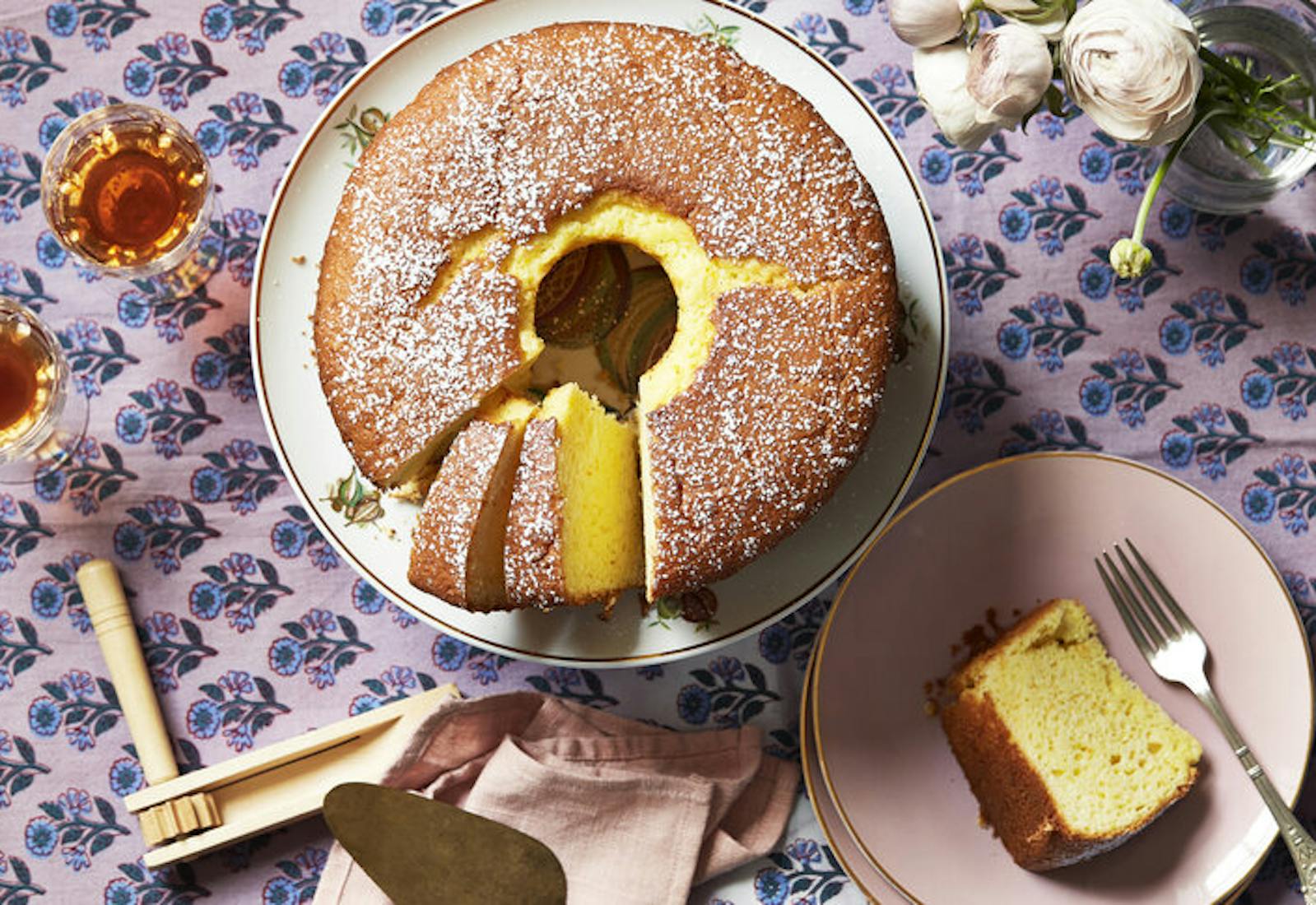Shared by Stella Hanan Cohen


“Pan d’Espanya (pan esponjado) is the iconic orange chiffon cake that has been made for generations [by] the Jews of Spain,” explains Stella.
This recipe is featured in our cookbook "The Jewish Holiday Table: A World of Recipes, Traditions & Stories to Celebrate All Year Long." For more holiday recipes from around the world, get your copy!
Read more about Stella's family in "These Medieval Spanish Recipes Live on in Zimbabwe" and try her recipes for Menenas (Shortbread Filled With Dates and Walnuts), Masapan (Marzipan), and Boulukunio (Almond and Sesame Brittle).
Preheat the oven to 350°F. Set out a 10-inch tube or angel food cake pan, but do not grease it.
Put the cake flour, baking powder, and salt in a medium bowl and whisk to blend; set aside.
Separate the eggs, putting 6 of the yolks in the bowl of a stand mixer fitted with the paddle attachment (or use a large bowl and a handheld electric mixer); discard the other 2 yolks (or reserve them for another use). Put all 8 egg whites into a small bowl (or another large bowl if you will be using a handheld mixer) and cover with plastic wrap; set aside at room temperature.
Add the superfine sugar to the egg yolks and beat at high speed until pale and creamy, about 2 minutes. Turn the mixer to low and beat in the oil, orange zest, orange juice, and orange blossom water. With the mixer still on low speed, add the flour mixture, beating only until the batter is combined, scraping down the sides of the bowl as needed. Remove the bowl from the mixer stand and set aside.
Put the egg whites in a clean mixer bowl, attach it to the mixer stand, and fit the mixer with the whisk attachment (or use the handheld mixer with clean beaters). Beat the egg whites until soft peaks form. Add the cream of tartar, if using, and continue to beat the egg whites until they hold firm peaks; take care that you don't beat them to the point of becoming grainy. Remove the bowl from the mixer stand.
With a large rubber spatula or a metal spoon, scoop up about one-third of the egg whites and gently fold them into the batter. Continue with the rest of the egg whites, a third at a time, folding gently until combined with no white streaks remaining.
Pour the batter into the ungreased tube pan and smooth the surface with a spoon. Bake until the cake is firm to the touch and a skewer inserted in the center comes out clean, 40 to 50 minutes. Immediately invert the cake pan onto a wire rack and let the cake cool completely, about 1½ hours.
To remove the cake from the pan, loosen the edges of the cake by running a long, thin knife around the inside of the pan and the center tube. Gently ease the cake out onto a wire rack and separate the cake from the base of the pan. Flip the cake back upright and lightly dust the top with confectioners’ sugar, if using.
Serve right away. Wrap any leftovers tightly in plastic and store at room temperature.